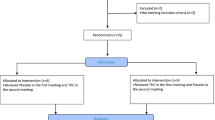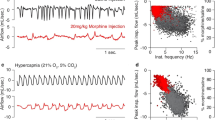Abstract
The involvement of serotonin (5-HT) in the modulation of nociceptive impulse in the spinal cord has been widely studied. However, its activity, considering the nature of noxious stimuli and the type of 5-HT receptors involved, merits to be further elucidated. The present behavioural study was performed to compare the doseantinociceptive effect relationship of 5-HT in rats, after intrathecal, (i.t.) injection (10 μl/rat), using mechanical (paw pressure), thermal (tail immersion and tail-flick) and chemical (formalin) pain tests. In rats submitted to the paw pressure test, 5-HT was found to possess a dose-dependent antinociceptive activity (0.01, 0.1, 1, 10 and 20 μg/rat) when vocalization threshold was assessed as a pain parameter. A peak effect occurred 5 min after the injection and the effect was maintained for 45 min. The lowest active dose was 0.1 μg (maximum increase in vocalization thresholds, 23±3%) and a plateau was observed for 10 μg and 20 μg (maximum increase in vocalization thresholds, 72±7% and 71±6%, respectively). When paw withdrawal was assessed, 5-HT induced a weak hyperalgesic effect for the highest dose (60μg), while other doses were ineffective. In the tail-immersion (warmth and cold) and tail-flick tests, different doses (0.01, 0.1, 1, 10, 30, 60 and 100 μg/rat), were studied. In the two immersion tests, only the highest doses (60 μg and 100 μg) significantly increased the withdrawal thresholds from 5 to 45 min after the injection. The maximum effect was observed at 5 min (23±4% and 21±6% for 60 μg; 27±3%, and 30±6% for 100 μg in the warmth and cold immersion test, respectively). In the tail-flick test, the doses of 30, 60 and 100 μg/rat dose-dependently and significantly increased the withdrawal thresholds from 5 to 45 min after the injection, with a maximum effect at 5 min (30±5% for 30 μg; 37±6% for 60 μg; and 45±4% for 100 μg). In the formalin test, 5-HT (10, 25, 50, 75 and 100 μg/rat) produced dose-related antinociception. The nociceptive response (licking of the injected paw) was significantly reduced from 25 μg (−59±11%) in the early phase, whereas the lowest active dose in the late phase was 50 μg (−46±17%). For both phases, a total inhibition was obtained with 100 μg. It is concluded that the effect of 5-HT on pain tests may differ according to the applied stimulus and the parameter assessed; unspecific effects of 5-HT may modify motor reactions to noxious stimuli. Mechanical test (assessment of vocalization) was the most sensitive to 5-HT. These observations are of importance in order to further study the pharmacological mechanisms involved in 5-HT spinally induced antinociception.
Similar content being viewed by others
References
Abbott FV, Franklin KBJ, Westbrook RF (1995) The formalin test: scoring properties of the first and second phases of the pain response in rat. Pain 60: 91–102
Alhaider AA, Wilcox GL (1993) Differential roles of 5-hydroxytrytamine1A and 5-hydroxytryptamine1B receptor subtypes in modulating spinal nociceptive transmission in mice. J Pharmacol Exp Ther 265: 378–385
Basbaum AI, Godefroy F, Weil-Fugazza J (1987) A new microdissection technique for regional analysis of the rat spinal cord: serotonin, norepinephrine, dopamine and acid uric. Brain Res 419: 229–238
Bervoets K, Rivet JM, Millan MJ (1993) 5HT1A receptors and the tail-flick response. IV. Spinally localized 5HT1A receptors postsynaptic to serotoninergic neurones mediate spontaneous tail-flicks in the rat. J Pharmacol Exp Ther 264: 95–104
Blandina P, Goldbarb J, Craddock Royal B and Green JP (1989) Release of endogenous dopamine by stimulation of 5-hydroxytryptamine receptors in rat striatum. J Pharmacol Exp Ther 251: 803–809
Cesselin F, Laporte AM, Miquel MC, Bourgoin S, Hamon M (1994) Serotonergic mechanisms of Pain Control. In: Gebhart GF, Hammond DL, Jensen TS (eds), Progress in pain research and management vol 2. Proc. of the VIIth World Congress on Pain, ISASP Press Seattle, pp 669–695
Coderre TJ, Empel IV (1994) The utility of excitatory amino acid (EEA) antagonists as analygesic agents. Comparison of the antinociceptive activity of various classes of EEA antagonists in mechanical, thermal and chemical nociceptive tests. Pain 59: 345–352
Coderre TJ, Fundytus ME, McKenna JE, Dalal S, Melzack R (1993) The formalin test: a validation of the weighted-scores method of behavioural pain rating. Pain 54: 43–50
Crisp T, Stafinsky JL, Spanos LJ, Uram M, Perni V, Donepudi HB (1991) Analgesic effects of serotonin and receptor selective serotonin agonists in the rat spinal cord. Gen Pharmacol 22: 247–251
Dubuisson D, Dennis SG (1977) The formalin test: a quantitative study of the analgesic effects of morphine, meperidine, and brain stem stimulation in rats and cats. Pain 4: 161–174
Eide PK, Hole K (1991) Different role of 5HT1A and 5HT2 receptors in spinal cord in the control of nociceptive responsiveness Neuropharmacology 30: 727–731
Eschalier A (1990) Antidepressants and pain management. In: Besson JM (ed) Serotonin and pain. Elsevier Science, Amsterdam, pp 305–325
Giordano J (1991) Analgesic profile of centrally administered 2 methylserotonin against acute pain in rats. Eur J Pharmacol 199: 233–236
Glaum SR, Proudfit HK, Anderson EG (1988) Reversal of the antinociceptive effects of intrathecally administered serotonin in the rat by a selective 5HT3 receptor antagonist. Neurosci Lett 95: 313–317
Glaum SR, Proudfit HK, Anderson EG (1990) 5HT3 receptors modulate spinal nociceptive reflexes. Brain Res 510: 12–16
Hamon M, Collin E, Chantrel D, Daval G, Verge D, Bourgoin S, Cesselin F (1990) Serotonin receptors and the modulation of pain. In: Besson JM (ed) Serotonin and pain. Elsevier Science, Amsterdam, pp 53–72
Hill RG (1994) Pharmacological considerations in the use of opioids in the management of pain associated with nonterminal disease states. Pain Rev 1: 47–61
Hole K, Berge OG, Eide PK, Fasmer OB, Hunskaar S, Lund A, Rostand JH, Tjolsen A (1990) Modifications in nociceptive reactivity following various serotonergic treatments: methodological difficulties. In: Besson JM (ed) Serotonin and pain. Elsevier Science, Amsterdam, pp 137–152.
Hoyer D, Clarke DE, Fozard JR, Hartin GR, Martin GR, Mylecharane EJ, Saxena PR, Humphrey PPA (1994) Classification of receptors for 5-hydroxytryptamine (serotonin). Pharmacol Rev 46: 157–203
Humphrey PPA, Hartig P, Hayer D (1993) A proposed nomenclature for 5HT receptors. Trends Pharmacol Sci 14: 233–236
Hylden JLK, Wilcox GL (1983) Intrathecal serotonin in mice: analgesia and inhibition of a spinal action of substance P. Life Sci 33: 789–795
Hunskaar S, Hole K (1987) The formalin test in mice: dissociation between inflammatory and non-inflammatory pain. Pain 30: 103–114
Hunskaar S, Berger OG, Hole K (1986) Dissociation between antinociceptive and anti-inflammatory effects of acetylsalicylic acid and indomethacin in the formalin test. Pain 25: 125–132
Kuraishi Y, Hirota N, Satoh M, Takagi H (1985) Antinociceptive effects of intrathecal opioids, noradrenaline and serotonin in rats: mechanical and thermal algesic tests. Brain Res 326: 168–171
Larson AA (1985) Distribution of CNS sites sensitive to tryptamine and serotonin in pain processing. In: Boulton AA, Maitre L, Bieck PR, Reiderer P (ed) Neuropsychopharmacology of the trace, amines, Humana, Clifton, NJ, pp 241–249
Le Bars D (1988) Serotonin and pain. In: Osborne NN, Hamon M (eds) Neuronal serotonin. Wiley, Chichester pp 171–229
Malmberg AB, Yaksh T (1992) Antinociceptive actions of spinal nonsteroidal anti-inflammatory agents on the formalin test in the rat. J Pharmacol Exp Ther 263: 136–146
Mestre C, Pélissier T, Fialip J, Wilcox G, Eschalier A (1994) A method to perform direct transcutaneous intrathecal injection in rats. J Pharmacol Toxicol Methods 32: 197–200
Millan MK (1986) Multiple opioid systems and pain. Pain 27: 303–347
Millan MK (1994) Serotonin and pain: evidence that activation of 5HT1A receptors does not elicit antinociception against noxious thermal, mechanical and chemical stimuli in mice. Pain 58: 45–61
Mjellem N, Lund A, Eide PK, Storkson R, Tjolsen A (1992) The role of 5HT1A and 5HT1B receptors in spinal nociceptive transmission and in the modulation of NMDA-induced behaviour. Neuroreport 3: 1061–1064
Murphy AZ, Murphy RM, Zemlan FP (1992) Role of spinal serotonin 1 receptor subtypes in thermally and mechanically elicited nociceptive reflexes. Psychopharmacology 108: 123–130
Onghena P, Van Houdenhove B (1992) Antidepressant induced analgesia in chronic non-malignant pain: a mate-analysis of 39 placebo controled studies. Pain 49: 205–220
Post C, Archer T (1990) Interactions between 5-HT and noradrenaline in analgesia. In: Besson JM (ed) Serotonin and pain. Elsevier Science Amsterdam pp 153–173
Rosland JH, Tjolsen, A Mæhle B, Hole K (1990) The formalin test in mice: effect of formalin concentration. Pain 42: 235–242
Sawynok J, Reid A (1992) Noradrenergic mediation of spinal antinociception by 5-hydroxytryptamine characterization of receptor subtypes. Eur J Pharmacol 223: 49–56
Schmauss C, Hammond D, Ochi J, Yaksh T (1983) Pharmacological antagonism of the antinociceptive effects of serotonin in the rat spinal cord. Eur J Pharmacol 90: 349–357
Schmidt CJ, Black CK (1989) The putative 5-HT3 agonist phenylbiguanide induces carrier-mediated release of [3H] dopamine. Eur J Pharmacol 167: 309–310.
Shibata M, Ohkubo T, Takahashi H, Inoki R (1989) Modified formalin test: characteristic biphasic pain response. Pain 38: 347–352
Solomon RE, Gebhart GF (1988) Mechanisms of effects of intrathecal serotonin on nociception and blood pressure in rats. J Pharmacol Exp Ther 245: 905–912
Wheeler-Aceto H, Cowan A (1991) Standardization of the rat paw formalin test for the evaluation of analgesics. Psychopharmacology 104: 35–44
Xu W, Qiu XC, Han JS (1994) Serotonin receptor subtypes in spinal anticociception in the rat. J Pharmacol Exp Ther 269: 1182–1189
Yaksh TL, Wilson PR (1979) Spinal serotonin terminal system mediates antinociception. J Pharmacol Exp Ther 208: 446–453
Author information
Authors and Affiliations
Rights and permissions
About this article
Cite this article
Bardin, L., Bardin, M., Lavarenne, J. et al. Effect of intrathecal serotonin on nociception in rats: influence of the pain test used. Exp Brain Res 113, 81–87 (1997). https://doi.org/10.1007/BF02454144
Received:
Accepted:
Issue Date:
DOI: https://doi.org/10.1007/BF02454144




